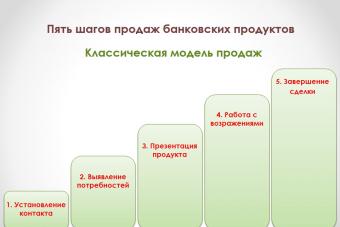What foods, besides yogurt, milk and eggshells, are rich in calcium, which is so necessary for the proper and active work of our body? And is it worth it to lean on these products or is it enough to gradually add them to your diet? What and how to eat so that calcium is absorbed by the body? We will answer these and other pressing questions in our material today.
We all know that calcium is a building material for our bones, it helps us keep our nails strong and our teeth intact. However, if you suddenly decided that you lack calcium, then you should not eat kilograms of cottage cheese and packs of vitamins. The fact is that this does not work, since calcium alone is not absorbed by our body, exactly like calcium in tablets (if you just take pills every day). To successfully strengthen bones, teeth and replenish the body with calcium, you should monitor your diet, make it as balanced and thoughtful as possible.
So, let's calculate the daily intake of calcium. Between the ages of 19 and 50, daily calcium intake - 1000 mg or 1 gram, and after 50 - 1200 mg. A vitamin D, according to research by The National Institutes of Heath — 0.636 mg. This minimum rate per day is enough for the normal functioning of the body without side effects. Therefore, it is worth understanding which foods contain a lot of calcium and take a look at this list.

Yes, we have already said that calcium is very poorly absorbed by the body alone. To work properly, he needs an assistant in the form of vitamin D, which "reveals" all the properties of calcium. But in order not to burden yourself with extra pills and not help your wallet lose weight, it is enough to eat the right foods that contain both calcium and vitamin D.
It is important to note that there is no universal product, but there are products that contain these elements in sufficient quantities. We recognize them, and simply add them to our diet, without fanaticism please. And let's take a closer look at the favorites among the products that contain a lot of calcium in order to know their heroes in person.
Which foods contain enough calcium and vitamin B?
Soya
So. One of the leaders among food products in terms of vitamin D content can be considered soy. This highly controversial vegetarian product not only has a lot of calcium, but also the ability to dilute our diet. Soybeans are used to make products such as tofu cheese, soy milk, cutlets and a host of other products. For example, 100 grams of tofu contains 350 mg of calcium, and milk contains 60. Only these products can cover half of the daily calcium intake, but it’s also great to eat without harm to the figure.
Almond
Nuts are a healthy product for our body, which contains a lot of nutrients and important trace elements. But few people know that almonds also contain a lot of calcium. 100 grams of almonds contain 273 mg of calcium, which is a pretty decent daily dose. In addition to calcium, magnesium can also be found in almonds, which also helps strengthen bones.

Salmon and tuna
Salmon leads among all representatives of red fish in terms of the amount of substances necessary for bones. Salmon contains a record amount of vitamin D: 0.595 mg per 100 grams of salmon. That is, from one serving of salmon, you can get the entire daily requirement of vitamin D, which, as we know, helps to absorb calcium. Delicious and incredibly healthy. Tuna contains slightly less vitamin D than salmon, however, it is no less useful.
Bananas
Bananas are the most unexpected product in terms of calcium content. However, everything is not so simple here. There is not much calcium in a banana itself - only 8 mg per 100 grams. But on the other hand, one banana contains the daily intake of potassium, which prevents the body from losing the already existing calcium. Simply put, it is worth eating bananas to avoid washing out calcium from the body.

Broccoli
Where without green vegetables? So, broccoli contains quite a lot of calcium (47 mg per 100 grams) and useful vitamin K (101 mg per 100 grams), which help to take care of our body, strengthen and restore bones. In addition, broccoli also helps to improve immunity.
White beans
A cup of white beans contains 200 mg of calcium and 125 mg of magnesium, which is an incredibly large amount of beneficial vitamins that help strengthen bones. So, by preparing just one cup of beans for lunch and eating salmon, you will replenish your daily calcium intake.
Sour cream and butter
In sour cream and butter there is a fairly high amount of vitamin D and a little calcium (these are dairy products). So, a little oil or sour cream in your dish a day will not hurt, but it will replenish your body with 50 (sour cream) and 150 (butter) mg of calcium.
Post Views: 124
“I have always taken care of my health,” says Maria, 46, from Moscow. - Twice a week I go to the pool, regularly take vitamins, I try to eat right. I know that after 40 years of age it is very important to maintain strong bones, and I have been taking calcium tablets for several years. But two years ago I tripped on the stairs and broke my leg, and last year I slipped on the street in the winter. The result is a broken arm. When at the doctor’s appointment I asked why I already had a second fracture in two years, if I drink calcium, he was indignant: “Calcium tablets? In no case. It is useless for the bones, but harmful for the heart.” For me, this statement was completely unexpected. At home, I began to study this topic on the Internet, and it turned out that many doctors agree with my surgeon.”
In the past few years, doctors have increasingly said that calcium tablets can have a negative effect on the heart. When you take a supplement, the level of calcium in the blood rises sharply and remains at this level for 3-5 hours, and this significantly increases the load on the vessels. So what is more important - strong bones or a healthy heart?
There is another study, the results of which were published by American scientists in February 2013. After several years of observation, doctors concluded that the standard dose of calcium (1000 mg) and vitamin D (400 units), which is usually recommended by doctors, does not affect the incidence of fractures in healthy women with normal vitamin D levels. that a higher dose might have been more effective is also not. How to be?

Green vegetables are also rich in calcium.
Try to get the right amount of calcium from food - this is the easiest and most effective way to keep bones strong and healthy. Calcium is not a medicine, but a nutrient, that is, a nutrient. And naturally, it is best absorbed from food, and not from a vitamin complex, no matter how high-quality and expensive it may be.
What else do you need for strong bones?
In order for bones to be strong, several nutrients are needed at once. Here are the most important ones. Moreover, these nutrients are best absorbed from food.
| Nutrient | Sources | On average, women receive |
|
Vitamin D |
Oily fish, egg yolk | |
|
Magnesium |
Green vegetables, whole grains, nuts | |
|
Vitamin K |
Spinach, broccoli, cauliflower, green salad | |
|
Potassium |
Vegetables and fruits, baked potatoes |
Is it possible to get the required amount of calcium from food or should we rely on miracle pills?
The bigger, the better?
Three dairy products a day will provide you with the right amount of calcium. If you do take vitamins, pay attention to the total amount of calcium you get. Doctors usually recommend 1,000 mg per day (1,200 mg if you're over 50), and this includes both the calcium you absorb from food and the extra calcium you take.
A British study last year confirmed that women who significantly exceed the recommended amount of calcium are more likely to suffer from heart disease. True, these data mainly relate to tablet forms, and natural milk and yoghurts are unlikely to harm your health. And remember that many other nutrients are needed for strong bones.
Don't forget protein. Our bones are about 50% protein and only 20% calcium. If you don't get enough protein, your bones won't be strong no matter how much you supplement. Lean meats, fish and seafood, eggs, legumes and nuts are your choice.
Eat vegetables and fruits. They are rich in potassium, which is another element that provides bone strength. In addition, a plant-based diet neutralizes acidity, which increases bone loss. If you are restricting dairy for dietary reasons, include as many calcium-rich vegetables as possible in your diet.
Take extra vitamin D. This element is necessary for the health of bones and muscles, namely, strong muscles can protect you from fractures. In addition, calcium is not absorbed without this "sunshine" vitamin. You'll find it in fatty fish, egg yolks, fortified milk, and cereals. The recommended daily allowance is 600 units, but some doctors recommend increasing it to 1000.
Limit the amount of salt. The fact is that the molecules of the kidneys, which ensure the exchange of sodium, are also responsible for calcium. This means that when salt is excreted from your body, you lose calcium along with it. The less salty you eat, the stronger your bones will be.
Avoid carbonated drinks. Norwegian doctors have proven that regular consumption of sugary soda destroys bones, especially if a person does not eat enough vegetables and fruits.
Move! Not only does good nutrition keep bones strong, regular moderate exercise (like brisk walking) is another must-have.
Assess the risks. Even if you carefully monitor your health and eat right, this does not provide one hundred percent protection against osteoporosis. Your genetic predisposition, your build, and previous medical conditions can increase your risk, so be sure to discuss your program of action with your doctor. And keep in mind that all women over 60 (as well as all those at risk for osteoporosis) should have regular check-ups.
CALCIUM BY HOURS
If you are unable to get the right amount of nutrients from food and are taking supplements, there are a few rules to follow to get the most benefit:
First, take calcium carbonate with food. or right after a meal for better absorption. Calcium citrate can be drunk at any time, regardless of the meal.
Second, if your doctor has prescribed you a high dose of calcium, take it in parts.- no more than 500 mg at a time. So you reduce the load on the heart and blood vessels.
Is it possible to get the required amount of calcium from food or should we rely on miracle pills?
Your meal plan
| Day 1 | Day 2 | Day 3 | |
|
Breakfast |
Muesli with milk (360 mg)40 g raisin muesli (fortified with calcium) and 1 cup low-fat milk |
Blueberry smoothie (381 mg)Mix 50 g fresh or frozen blueberries in a blender with 100 g milk and 100 g natural yogurt |
Egg sandwich (233 mg)Omelet from 1 egg and 3 tbsp. l. milk, 1 slice of hard cheese, cereal bun |
|
Dinner |
Kale salad (304 mg)100 g chopped kale, a handful of hazelnut flakes, 1 chopped apple, 10 grapes, olive oil and lemon juice |
Cheese platter (326 mg)Ideal snack: 30 g cheddar cheese + 20 g walnuts + two crackers |
Chef salad (277 mg)2 cups chopped romaine lettuce, 100 g turkey breast, hard boiled egg, 30 g grated cheese. |
14.03.2011
The main role in the metabolism of calcium in the human body belongs to the bone tissue. In the bones, calcium is represented by phosphates - Ca 3 (RO 4) 2 (85%), carbonates - CaCO 3 (10%), salts of organic acids - citric and lactic (about 5%). Outside the skeleton, calcium is contained in the extracellular fluid and is practically absent in the cells.
Therefore, let's talk about foods rich in calcium and fluorine.
Foods especially rich in calcium
, grapes, gooseberries, blackberries, beets, carrots, strawberries, cherries, cucumbers, oranges, peaches, pineapples, strawberries, dill, parsley, celery, onions, young turnip tops, green beans, peel of all fruits and vegetables, spinach, dandelion, bran, almonds, dairy products.Foods especially rich in phosphorus: pears, nuts of all kinds (including peanuts), rye, barley, lentils, soybeans, sprouted wheat, meat, mushrooms.
Eat foods that are easier to absorb calcium
Calcium is best absorbed from milk and yogurt. These products are the best suppliers of calcium. These are everyday food items sold in special take-away packages that are suitable for people who spend a lot of time away from home.
Low-fat dairy products contain the same amount of calcium as high-fat foods, and in addition, they have a reduced fat content and, which is also good for the body.
Some other foods contain calcium, which is poorly absorbed. The reason is that these foods contain calcium-binding substances called oxalates (found in many green vegetables) and phytates (found in unrefined grains). Of these two substances, oxalates have the greater ability to interfere with calcium absorption.
For instance . Although spinach contains calcium, it also contains oxalates (like beets and rhubarb) which bind to calcium and block its absorption.
These products, in addition to substances that block calcium absorption, also contain useful substances and therefore should not be excluded from the list of consumed products. However, the calcium found in these foods should not count towards your daily intake.
Some foods increase the excretion of calcium in the urine
Every day we lose calcium in the urine. Small losses of calcium in the urine are a natural process. Research data show that urinary calcium loss is increased with excess salt, caffeine, and protein intake.
Salt (sodium chloride)
Excess sodium increases calcium loss in the urine. Salt intake is the most common cause of calcium excretion in the urine. About 90% of sodium comes from food, not table salt. Therefore, it can be advised to keep your intake of salt and salty foods to a minimum, this recommendation is also good for your overall health.
Table 1 . Calcium content in some foods
|
Food |
Product Quantity |
|
|
Milk and dairy products |
||
|
Cheese - Swiss, Graer |
||
|
Cheese - a hard form, Cheddar, Colby, Commercial, Gouda |
||
|
Milk - whole, 2%, 1% fat |
1 cup/250 ml |
|
|
1 glass / 250 ml |
||
|
Cheese-Mozzarella, Adyghe, cheese |
||
|
Yogurt - plain |
1 cup/175 ml |
|
|
Molojuz - dry, in powder form |
||
|
Ice cream |
||
|
Cheese - rustic, creamy 2%, 1% fat (cottage cheese) |
||
|
Meat, fish, poultry and other products |
||
|
Sardines, with bones |
8 small |
|
|
Salmon, with bones, canned |
1/2 can (net weight 13 g) |
|
|
Beans - cooked (beans, blue beans, spotted beans) |
||
|
Soybeans - cooked |
||
|
Fried chicken |
||
|
Beef - fried |
||
|
Bread and cereals |
||
|
Round bun with bran |
||
|
Bread - white and wheat |
1 piece/30 g |
|
|
Fruits and vegetables |
||
|
Broccoli - raw |
||
|
oranges |
1 medium/180 g |
|
|
1 medium/175 g |
||
|
2 large sheets |
||
|
dried figs |
||
|
Combined dishes |
||
|
Soup with milk, chicken, mushroom, tomato and broccoli cream soup |
1 cup/250 ml |
|
|
Cooked canned beans |
1 cup/250 ml |
|
Caffeine depletes calcium
Caffeine is found in many beverages including coffee, tea and cola. Recent studies have shown that caffeine enhances calcium excretion in the urine. Most experts believe that two or three cups of coffee a day may not cause much damage and may not affect daily calcium intake.
But if you drink more than three cups a day, you need to drink at least a glass of milk for every extra cup of coffee (better to drink coffee with milk). Keep in mind that the less calcium you consume, the more damage you are doing to yourself by drinking coffee.
The more easily calcium is absorbed, the better it is absorbed by the body.
Protein(protein) . Data from some studies show that eating a large amount of protein food can lead to increased excretion of calcium in the urine. However, protein foods (meat, fish, poultry, daily foods, dried peas, beans, etc.) contain many beneficial nutrients that are essential and should not be excluded from the food consumed. In the recommended amounts, protein foods do not affect calcium loss in the urine.
Calcium requirement during breastfeeding increased by 80% - 200 mg to 1250 mg per day. During the first 6 months, it gives 210 mg of calcium daily, so its reserves in the body should be regularly replenished.
What is considered excess protein intake?
The Canadian Food Guidelines recommend eating two or three protein-cooked foods per day (for example, this amounts to a small serving of meat (56-84), fish or poultry, or 1-2 eggs). Many so-called "small servings" of meat or fish can also contain 2 or 3 servings of cooked food in one.
The Canadian Osteoporosis Association recommends sticking to established protein intakes and making sure you get the right amount of calcium from your diet. We also believe that the protein found in everyday foods should not be limited, because even if it leads to the loss of calcium in the urine, these losses are made up for by the amount of calcium that the body receives when they are consumed.
If you do not consume everyday foods that contain calcium (milk, cheese, etc.), then it is imperative that you keep an accurate count of your calcium intake.
Vitamin D is an important factor in calcium absorption.
Increases calcium absorption by 30 - 40%. The Canadian Osteoporosis Association recommends 400 IU of vitamin D per day for adults (400 to 800 IU of vitamin D per day for older adults).
1 IU (International Unit) contains 0.025 micrograms of chemically pure vitamin D.
The easiest and most natural way to get vitamin D is by secreting it from the body itself under the influence of sunlight. It takes 15 minutes in the sun in the summer (even if only the face, arms and hands are exposed to the sun) to significantly increase the production of vitamin D.
In Canada (as well as in Russia. - Translator's note), solar activity in winter is very small, the secretion of vitamin D in the skin stops from early October to late March. If we are at home all the time and rarely go outside, then we cannot dump vitamin D. In order to make up for this deficiency, we need to try to find other sources of vitamin D.
Contained in some foods, such as milk, its amount is usually insufficient. (Milk fortified with vitamin D contains from 100 IU per 100 ml - glass.)
Foods such as margarine, eggs, chicken liver, salmon, sardines, herring, marel, swordfish, and fish oils (halibut and cod liver oil) contain very small amounts of vitamin D. Since vitamin D is usually deficient in food you eat, you may need to take vitamin D supplements.
Most multivitamins contain 400 IU of vitamin D.
The physical exercises we do make our bones stronger.
You can’t talk about calcium without saying a word about the importance of physical activity for the skeletal system. Physical exercise has a positive effect on the skeletal system and bone remodeling, contributing to the stimulation of bone formation. In this regard, the Canadian Osteoporosis Association strongly recommends the combination of adequate calcium intake and physical activity as the main measures for the prevention of osteoporosis.
table 2 . Age requirement for calcium
|
Age |
Calcium intake, mg |
|
10-12 years old (boys), 10-12 years old (girls), 1 children 13-16 years old |
|
|
1000-15002 |
1 On average, girls mature 2 years earlier than boys.
2 The recommended minimum is 1000 mg, but if the risk of osteoporosis is high, an increase in calcium intake is necessary.
|
|
|
Too much calcium in the body
Deficiency, as well as excess calcium in the body is closely associated with a violation of the intake of vitamin D, so the above symptoms do not always indicate a violation in the absorption of only one calcium.Symptoms of excess calcium in the body do not appear immediately and not for everyone. An increased concentration of calcium precedes the long-term use of natural dairy products (milk, cottage cheese, cheese, etc.).
In addition, an increased content of the macroelement is noted in the presence of a malignant tumor of the lungs, mammary glands, as well as in men with a malignant formation of the prostate gland.
Excess calcium can occur as a side effect of long-term medication, in the treatment of peptic ulcers of the intestine and stomach, as well as during and after radiation therapy. The syndrome of multiple endocrine pathology, which has a hereditary cause, is also the cause of an excess of the mineral.
Pronounced symptoms of excess calcium:
Nausea, which is often accompanied by vomiting; Lack of appetite; constipation; Arrhythmia and disruption of the heart muscle; Violation of the kidneys; Deterioration of the mental state up to hallucinations; General weakness, etc.
Thus, the signs of excess calcium in the body are similar to its deficiency. Indirectly, an excess of calcium can be suspected by the presence of the above signs that occur against the background of excessive long-term consumption of dairy products and calcium preparations, as well as vitamin D.
In addition to the pronounced symptoms, excess calcium in the blood plasma is the most accurate way to determine it.
What happens to excess calcium in the human body?
In a natural way, calcium is excreted from the body poorly. Its maximum concentration is observed in the kidneys, which very often gives impetus to the development of urolithiasis.
Calcium settles on the inner wall of blood vessels, which contributes to the development of stenosis (narrowing). Muscle tissue suffers from excessive excess.
How can excess calcium be removed from the body?
Only a doctor is involved in removing excess calcium from the body and normalizing its indicators to normal numbers. A person can improve their health on their own by adhering to a balanced diet. Calcium is not synthesized in the body and comes only from food.
Therefore, products containing it are excluded from the diet.
An additional amount of calcium is most often included in the composition of vitamins, it is enriched with products for children and medical nutrition, added to the composition of bioactive additives. And of course, there are a number of calcium-based preparations. This whole army and all this rear is being developed by scientists for a reason. The problem is that our usual diet is extremely depleted in this important macronutrient, without which we cannot live a day.
The most common and well-known application of calcium is in the restoration and strengthening of dental and bone tissue density. Calcium is part of hydroxyapatites, which are strung on a matrix of fibers and form the basis of bones and tooth enamel. Therefore, with multiple caries, after bone fractures, with intensive growth of children, an increased amount of calcium is required.
However, not everyone knows that the role of calcium in the body is much more extensive. Each muscle - from the heart to the "biceps" - "uses" calcium during its contraction. The blood coagulation system, which ensures that bleeding stops in case of injuries, also uses this mineral in its cycle of transformations. And also an incredibly huge number of metabolic processes that are interconnected, like gears in a huge clockwork, depend on calcium.
That is, we really need it very, very much!
Even under the condition of living on a dairy farm and daily consumption of fresh milk, it is impossible to be 100% sure that the body will have enough calcium.
Firstly, for the absorption of calcium, a certain acidity of the gastric juice is necessary, the proper functioning of the intestines for its absorption. Accordingly, in chronic diseases of the stomach and intestines, there may be problems with absorption. Secondly, for the absorption of calcium, vitamin D is needed, which helps calcium reach bone tissue and strengthen it firmly.
Who Needs More Calcium?
It is often believed that only pregnant women need calcium supplementation. Actually, it is not. No, of course, women who are expecting a baby need more calcium. It is needed for the formation of the bone skeleton of the fetus. However, even during breastfeeding - this amount should not decrease - during this period the child grows intensively. And if not enough calcium is supplied with calcium products, the woman's body begins to "wash" it out of the bone or dental tissue.
Calcium is equally important for teenagers. About 85% of human bone tissue is formed at the age of the most intensive growth - from 10 to 14 years. Therefore, to fill the daily need for calcium, adolescents need to drink either a liter of milk or eat 250 grams of cottage cheese per day.
The proper amount of calcium is important even after 30 years. It is believed that after the age of 25, bone density decreases. And by the beginning of the menopause, the body in a large number of cases experiences a calcium deficiency, which is expressed in the development of osteoporosis. With this disease, on the x-ray, dense bone tissue turns into a “moth-beaten” plate. Therefore, a complex preparation of calcium with vitamin D is a means to stop this process of destruction.
daily calcium intake
- Children under 3 years old - 600 mg.
- Children from 4 to 10 years old - 800 mg.
- Children from 10 to 13 years old - 1000 mg.
- Adolescents from 13 to 16 years old - 1200 mg.
- Boys and girls - 1000 mg.
- Adults - 800 to 1200 mg.
- Pregnant and breastfeeding women - 1500 to 2000 mg.
- Black bread 88 mg
- Hard cheese 800 mg
- Milk 120 mg
- Watercress 220 mg
- Yogurt 180 mg
Refrigerator Alternative
In order not to spend days on end with a calculator, counting what you eat and drink, we offer you a proven French way to compensate for the required amount of calcium during the day. The drug is Calceos. It contains 500 mg of calcium and 400 units of vitamin D in the form necessary for rapid assimilation.
Its daily intake will allow:
- avoid muscle cramps and bone pain
- prevent weakening of bone tissue and its destruction

Hello dear friends! Calcium is an essential component in the body. Strong bones, healthy teeth - all this is the merit of this substance.
In order for all systems and organs to function normally, it is necessary to maintain the necessary balance of this trace element. So, let's find out what is the daily intake of calcium for women after 30.
Always remember that providing the body with this substance should be regular.

The body uses calcium for a variety of purposes. First of all, it performs the function of a building material, and also maintains healthy bones and teeth.
Calcium has a certain effect on the heart muscle and also coordinates the heartbeat. In addition, together with potassium and magnesium, it regulates blood pressure and also enhances the effects of vitamin K.
Calcium affects membrane permeability. This substance helps to strengthen the immune system, the synthesis of enzymes and is involved in the digestion of food.
Let's note the main functions of calcium:
- anti-inflammatory properties.
- antioxidant functions.
- Activates enzymes and hormones.
- Influences the content of glucose.
- It is a prebiotic.
Calcium is necessary for a person, especially during certain periods of life. This trace element is needed during the active growth of the child, as well as for pregnant women.
A nursing mother needs to consume foods containing this component. The element is also important after 40-50 years.
Calcium-rich foods

Find out how much of this component you need to consume. To ensure the daily requirement, it is important to use a balanced diet.
After all, this mineral is found in sufficient quantities in foods.
Calcium can be found in the following plant foods:
- Cereals - buckwheat, rice, semolina and barley.
- Legumes.
- Vegetables - potatoes, green onions, broccoli, cabbage, parsley and carrots.
- Fruits - kiwi, tangerines, bananas, pears and apples.
- Dried fruits - dried figs, dates and raisins.
- Nuts and seeds.
Calcium is also found in such sources of animal origin:
- Fish - sardine, salmon and.
- Meat products.
- Dairy products - cottage cheese, cheese, milk.
Milk contains a significant amount of calcium. In a glass of fat-free product - approximately 244 mg. 30 g of cheese contains - 308 mg.
It is worth remembering that along with food, which contains calcium, alcohol and chocolate should not be used.
Excess salt contributes to increased loss of calcium. The same will happen with a significant amount of meat consumption.
daily intake of calcium

Now let's find out what is the daily intake of calcium. For adults, the consumption rate –1000-1200 mg.
The indicator for women over 16 years of age varies between 800-1200 mg. For pregnant – 1500-2000 mg.
When using special hormonal therapy - 800-1000
. Without special treatment 1300-1500
.
Norm for men —800-1200
. Men over 65 need – 1300-1500 mg.
For both men and women over 70- daily rate - 1300-1500
.
For children up to 3 years old – 500-600 mg. For 4-10 years old – 800 mg. For children 10-16 years old- about 100-1200 mg.
The daily dose also depends on the constant activity. The stronger the load, the greater the need for a useful mineral.
With artificial feeding, it is important to pay attention to the vitamin and mineral composition of the diet.
Calcium deficiency: consequences
The lack of calcium is especially felt after 30 years. With a deficiency of this element, serious diseases can occur. It should be borne in mind that the absorption of this component is facilitated by vitamin D, which is produced under the influence of the sun.
Here is what the lack of this mineral leads to:
- growth retardation in children and the occurrence of rickets;
- the appearance of allergic reactions;
- curvature of the bones;
- problems with blood clotting;
- the appearance of sand in the urine;
- capillaries become fragile.
With a chronic lack of calcium, the gums begin to bleed, teeth are destroyed, and involuntary muscle contractions occur.
Mental and physical stress is also poorly tolerated.
A deficiency of this mineral can also provoke more dangerous diseases - osteoporosis and osteomalacia. This causes softening of the bones.
Also, a lack of calcium can provoke the appearance of such a neurological disease as multiple sclerosis.
Excess of this component is manifested at high dosages of drugs. This results in tissue calcification.
When using pharmaceutical products, it is important to follow the instructions. It is worth noting monopreparations containing calcium salt. Combined products also provide the body with vitamin D. Multivitamin complexes are used for pregnant women.
Remember that everything needs a measure. You can not thoughtlessly take a drug with a calcium content.
If you supply the body with everything necessary in a timely manner, then this is the best guarantee of good health and external beauty.
If you want to add something, write in the comments. Until we meet again, friends!





